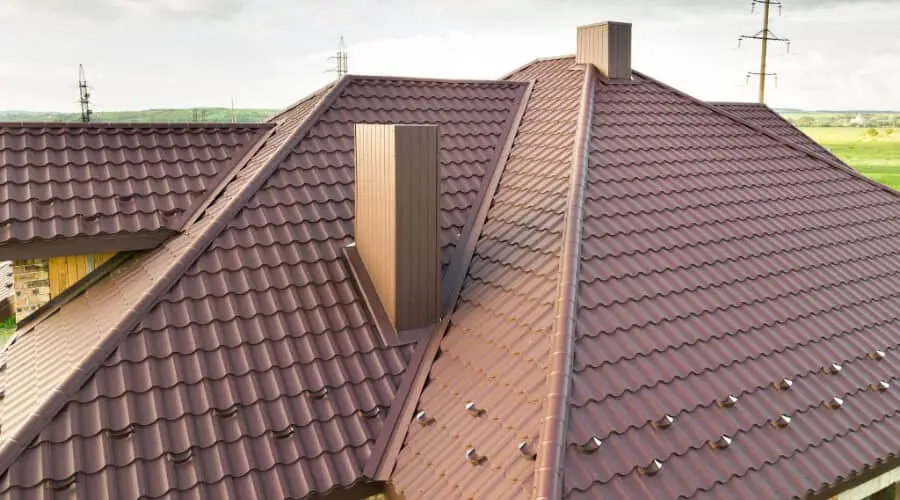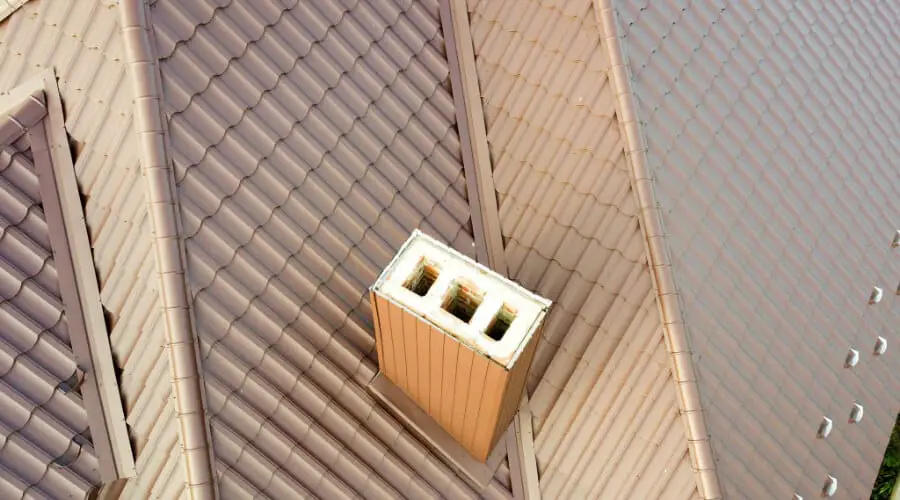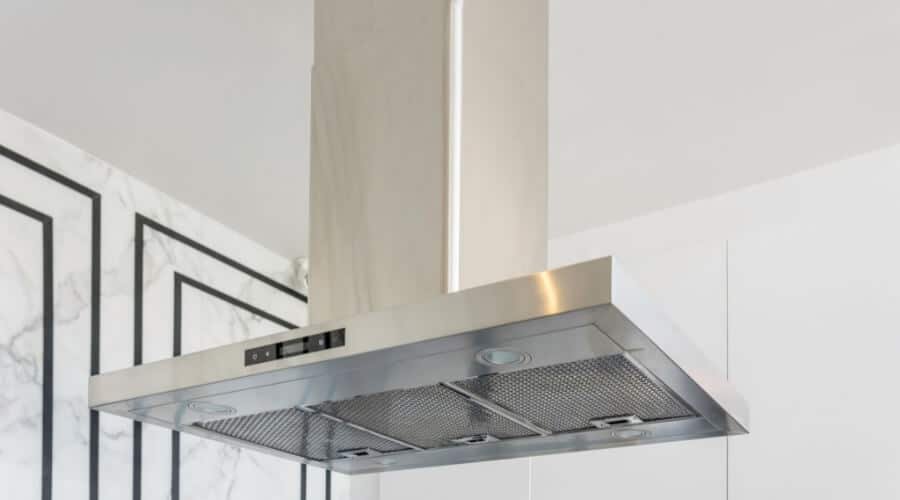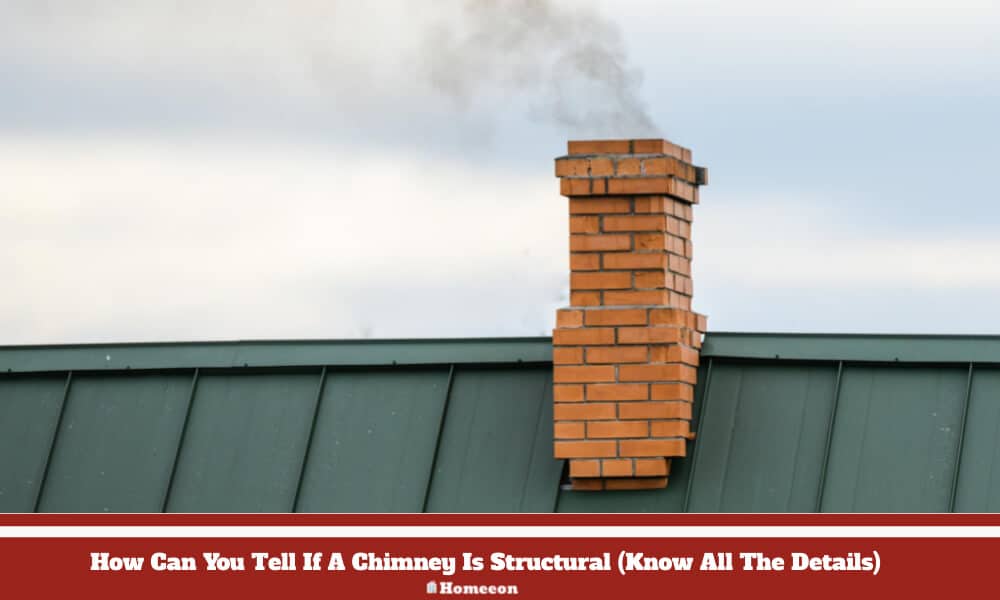Last Updated on July 24, 2023 By Emma W. Thomas
To determine if a chimney is structural, consider these factors:
- Examine its location; central chimneys are often load-bearing.
- Assess its construction; if it extends above the roofline, it may be structural.
- Consult a professional structural engineer to ensure safety and make informed decisions.
Factors to Determine A Chimney to Be Structural
Determining whether a chimney is structural or not can be a rather technical process. This determination is primarily based on a few critical factors. An understanding of these factors can provide essential insights, particularly when considering the removal or remodeling of a chimney.
1. The Chimney’s Primary Function:
- If the chimney’s main function is to vent out combustion gases or smoke from a hearth or stove, it could be considered a structural element.
- On the other hand, a decorative chimney that doesn’t serve any significant function may not be structural.
2. The Chimney’s Design and Materials:
- The materials used to build a chimney such as bricks, stones, or metal could inform whether it’s a structural component.
- A chimney made of robust materials capable of withstanding constant exposure to the elements might be considered structural.
3. Physical Connection to the Building:
- The nature and degree of the chimney’s physical connection to the rest of the house play a major role.
- If the chimney is fully integrated into the building process and shares a common wall or roof with the main structure, it is likely structural.
4. Role in Structural Stability:
- A chimney’s role in the overall structural stability of the house is a decisive factor.
- A chimney that has over time become a significant part of the building’s structural support system can be deemed structural.
5. Regulations and Building Codes:
- Consider the local regulations and building codes. Some jurisdictions may consider certain types of chimneys as structural elements, regardless of their size or function.
6. Reports and Documentation:
- The building’s architectural plans or any engineering reports could provide useful information in this regard.
- Terms like “load-bearing” used in description could indicate a structural chimney.
Factors Determining a Chimney to Be Structural:
| Primary function | Chimney’s Design and Materials | Physical connection to the building | Role in Structural Stability | Regulations | Reports |
|---|---|---|---|---|---|
| Chimney as a vent for combustion gases or smoke | Robust materials used in chimney construction | Chimney fully integrated into the building process | Role in supporting the building’s structure | Local building codes | Architectural plans |
Remember, the determination of whether a chimney is structural or not is a technical evaluation and should ideally be done by an expert, such as a structural engineer or a building inspector. They are skilled enough to make accurate assessments based on the aforementioned factors, ensuring safety standards are upheld.
What Are The Other Tips Of A Structural Chimney?

Other tips of telling if a chimney is structural include;
- The design and construction of both the combustion chamber and chimney should be such that the temperature of the flue gases does not drop below 100 degrees Celsius.
- Dry wood used for heating needs not to have a moisture content above 20%.
- If the heating materials used in the chimney are liquid such as gas or oil, the flue gas temperature should remain below 100 degrees Celsius. The boilers need to use materials like ceramic and stainless steel, which are acid-resistant in the chimneys. Such materials prevent disruption in the operation of the smoke channels.
- A structural chimney observes the Fire Safety Act and its requirements.
How To Tell What Kind Of Chimney You Have

It is easy to tell what type of chimney you have by checking the fireplace.
Different Types Of Fireplaces That Are Available
Type Of Fireplace | Distinctive Feature |
Wood burning/prefab fireplace | It uses a double/triple wall chimney. It is made of metal sheets and covered with tile brick or stone. |
Masonry fireplace | It is made of stone, brick, or modular masonry units. There is a stone or brick chimney in the attic. |
Gas burning fireplace | The fireplace uses gas only. |
Natural vent/B-vent fireplace | They are used by operating a remote or wall switch. The chimney goes through the roof and is visible in the attic. |
Direct vent gas fireplaces | It has a sealed face or glass panel on the front and is operated by a remote or wall switch. |
Vent-free fireplace | No vent pipe or chimney, and it is used with vent-free appliances. |
Wood Burning Fireplaces
Wood burning (also referred to as air-cooled, zero clearance, or prefab) fireplace is the most common in homes. This fireplace is factory-built and utilizes a double or triple-wall chimney system. You can use the fireplace with gas for starting wood fires or install a fire glass, gas insert, or a gas log set, to convert it to gas only. To identify the unit, look inside the fireplace and see if it is made of a metal sheet. Its walls (1-3) need to be ceramic with a stone or brick pattern.
The fireplaces have their front covered with stones, tile, or brick for aesthetics. The flue is a round metal pipe that goes up, and the fireplace has a damper to be closed or opened.
Gas Burning Fireplaces
A gas fireplace may not be very easy to identify and is not meant for solid fuels but for gas only. These fireplaces have dead giveaways and are more closely related to clothes dryers and your kitchen range. Gas-burning fireplaces come with fittings that cannot be substituted or altered.
Masonry Fireplaces
This type of fireplace is made of stone, brick, or modular masonry pieces. You can easily identify the fireplace by a stone or brick chimney in the attic area that extends through the roof. The chimney has bricks or clay roof tiles which is also an identical feature for this fireplace. Since these fireplaces are less restrictive in what you can use, you can use any accessory or appliance in them.
Natural Vent (B-vent Fireplace)
Natural vent fireplaces are mostly available in modern homes. The fireplaces are not for heating and are quite attractive. They usually have a glass door that you can close and open or a solid glass door with air gaps at the top and bottom. This fireplace has a chimney that enters the rooftop and which you can see in the attic as a vent. One of the most distinctive features of this fireplace is a burner setup and log set that is not so desirable.
Direct Vent Gas Fireplaces
Direct vent gas fireplaces are operated using a remote or wall switch and can heat both small and large sections. The fireplaces have no damper for the user to open or close and are mostly used for gas only. You can never alter these fireplaces’ burner setup or log.
How Can You Clean The Chimney?

The process of cleaning the chimney needs a lot of caution and care since it is unpleasant and can be a health hazard. A chimney has filthy and toxic soot that is difficult to remove since it can lead to a fire outbreak. The substance can also generate dangerous and unpleasant fumes when removed. When cleaning this part of your building, you must have the appropriate materials and be sure to follow the right procedure.
The following tips are very helpful;
Collect all the materials you require for the job, including;
- A metal brush for cleaning the fireplace
- Newspaper sheets
- A hard nylon brush
- Gloves, shovel, rags, and towels
- Brush, dustpan, garbage bags, and lantern
Once you have all the equipment needed, follow these simple steps;
- Put on a hat, protective clothes, and rubber gloves. Doing this will help to protect your hair, body, and hands from any harmful substances.
- Using newspaper sheets, cover the floor and all furniture that is close to the fireplace.
- Place a garbage bag nearby where you will deposit debris and papers after cleaning.
- Confirm that the ashes are cold, then remove the grill (be sure to clean it separately). Clean the fireplace drawer by using a shovel to collect all the ashes
- Check the flue and chimney to ensure that the air outlet is free. If this is the case, use a shovel to scrape off any soot embedded on the sides.
- Scrape the inside of the chimney using a metal brush and rub all the walls. Doing this will ensure that all the soot is removed.
After all the soot is out, work on other parts such as;
- Cleaning the grills with a wire brush. Make sure that you clean this piece from top to bottom and see that no grime remains on the walls.
- Use water and soap to clean the drawer, then remove all the papers placed on the floor. Carefully place the papers in the garbage bag and avoid pouring the soot on the floor.
- Use water, a sponge, or pieces of cloth to clean the walls and front. Replace the water and repeat this procedure until the water is no longer dark. Then rinse and dry the walls using towels and old newspapers.
- Using a wire brush, clean the grates and other metal parts and carefully dry them to prevent rusting.
- Once you have cleaned everything, carefully remove any remaining newspaper sheets that you used for protection and place each item back where it was. Finally, you can close the air duct.
Conclusion
Several tips can be used to tell if your chimney is real or not, such as whether it is covered with a concrete cap or tin. The chimney also needs to have adjustable vents on the outer wall, and its design must prevent the temperature of the flue gases from dropping below 100 degrees Celsius.
References:
https://homearise.com/chimney-structural/
https://mykitchenpoint.com/how-to-tell-if-a-chimney-is-structural/
Emma is a graduate of Domestic Science or Family and Consumer Sciences (Home Economics) from the University of Wisconsin. She has 7 years of experience Working with the strategic section of BestBuy and now writing full-time for Homeeon.
From Managing the Home, Interiors, Cleaning, and Exteriors to Gardening and everything about Making A Home Liveable – is her passion and this Homeeon is the result of this.
Emma loves decorating her home with the best stuff found online. She cares about quality over anything and writes reviews about them here in Homeeon. Get in touch with her over Pinterest.
Keep reading her blogs.

